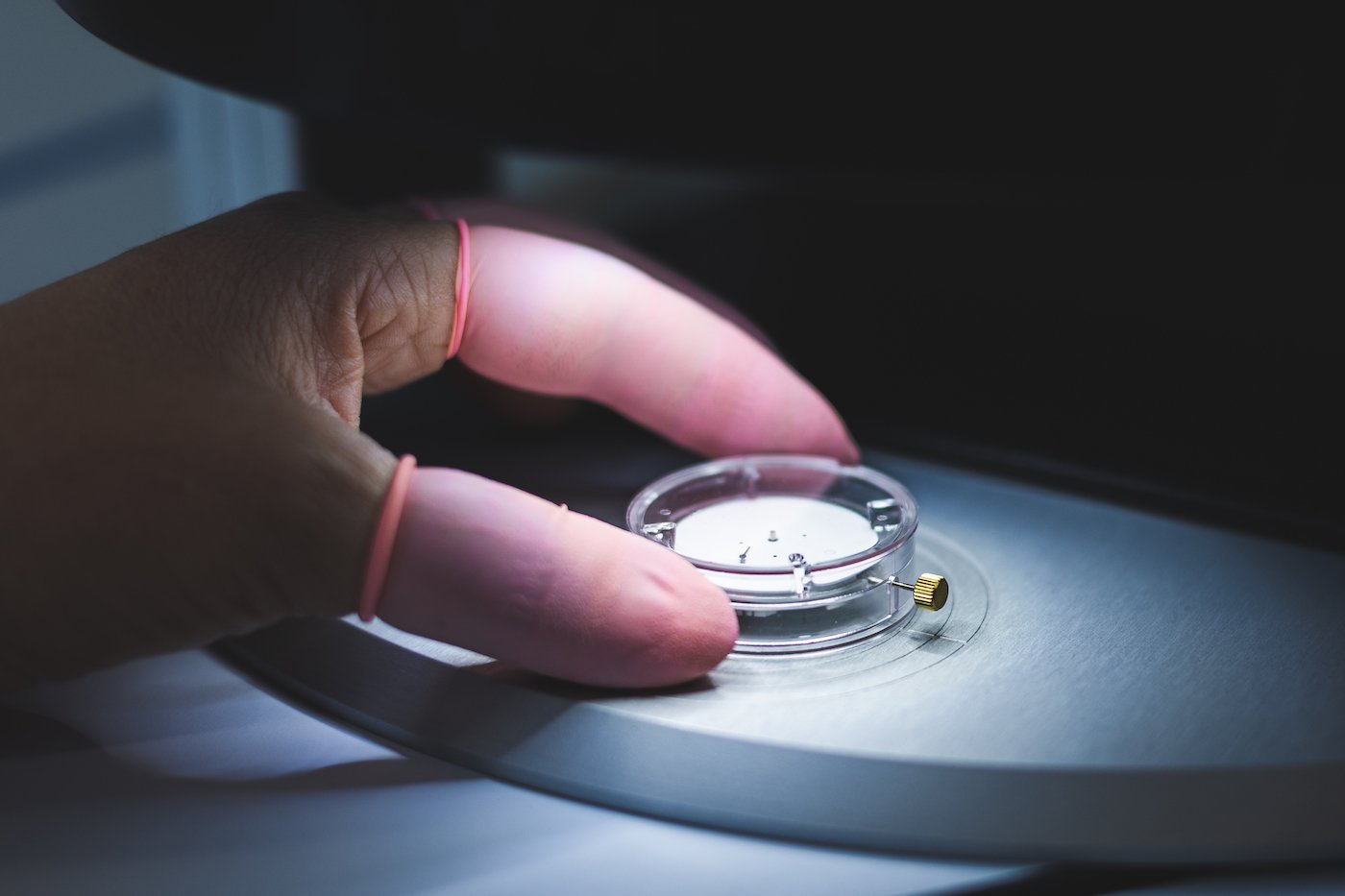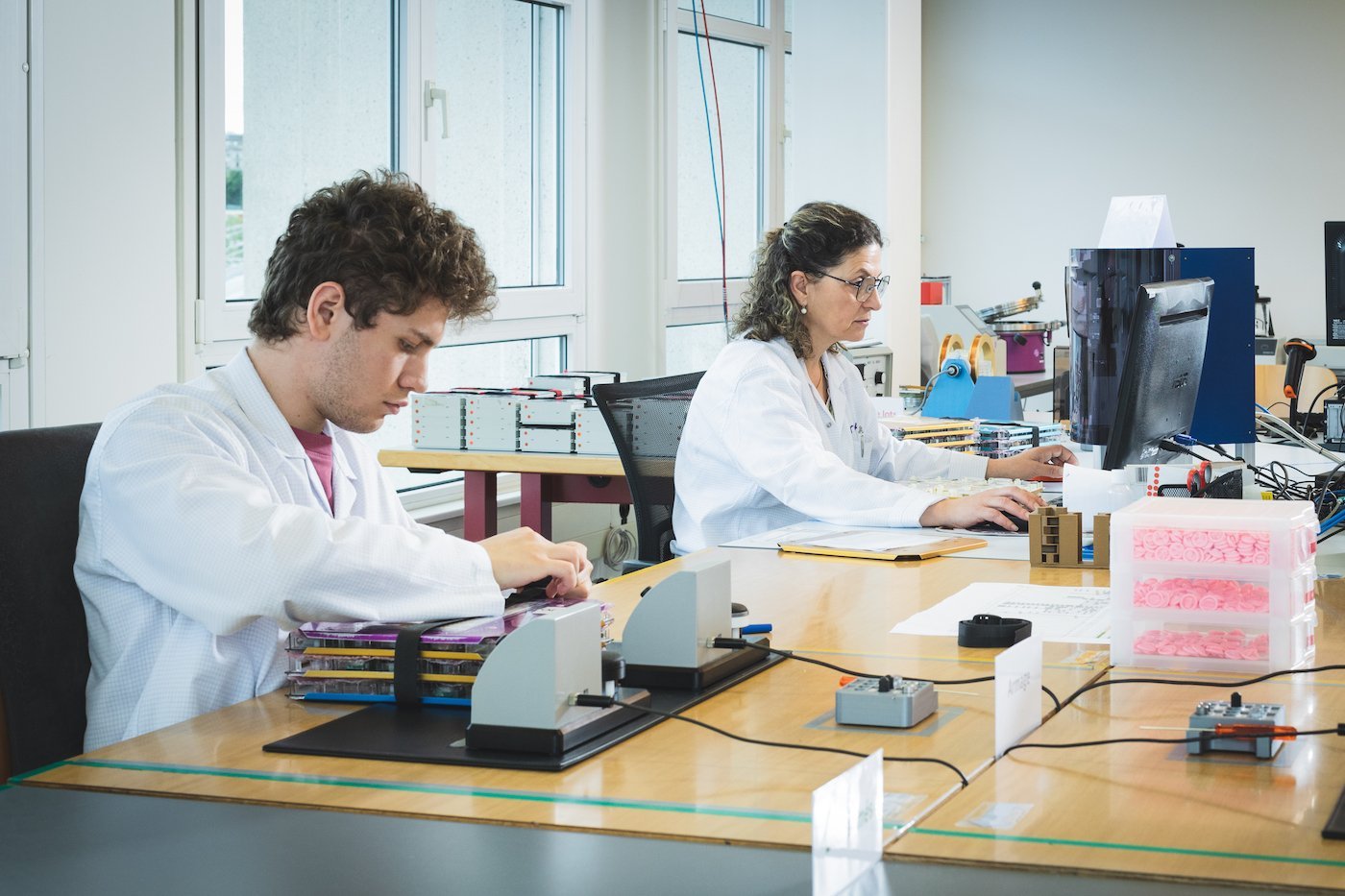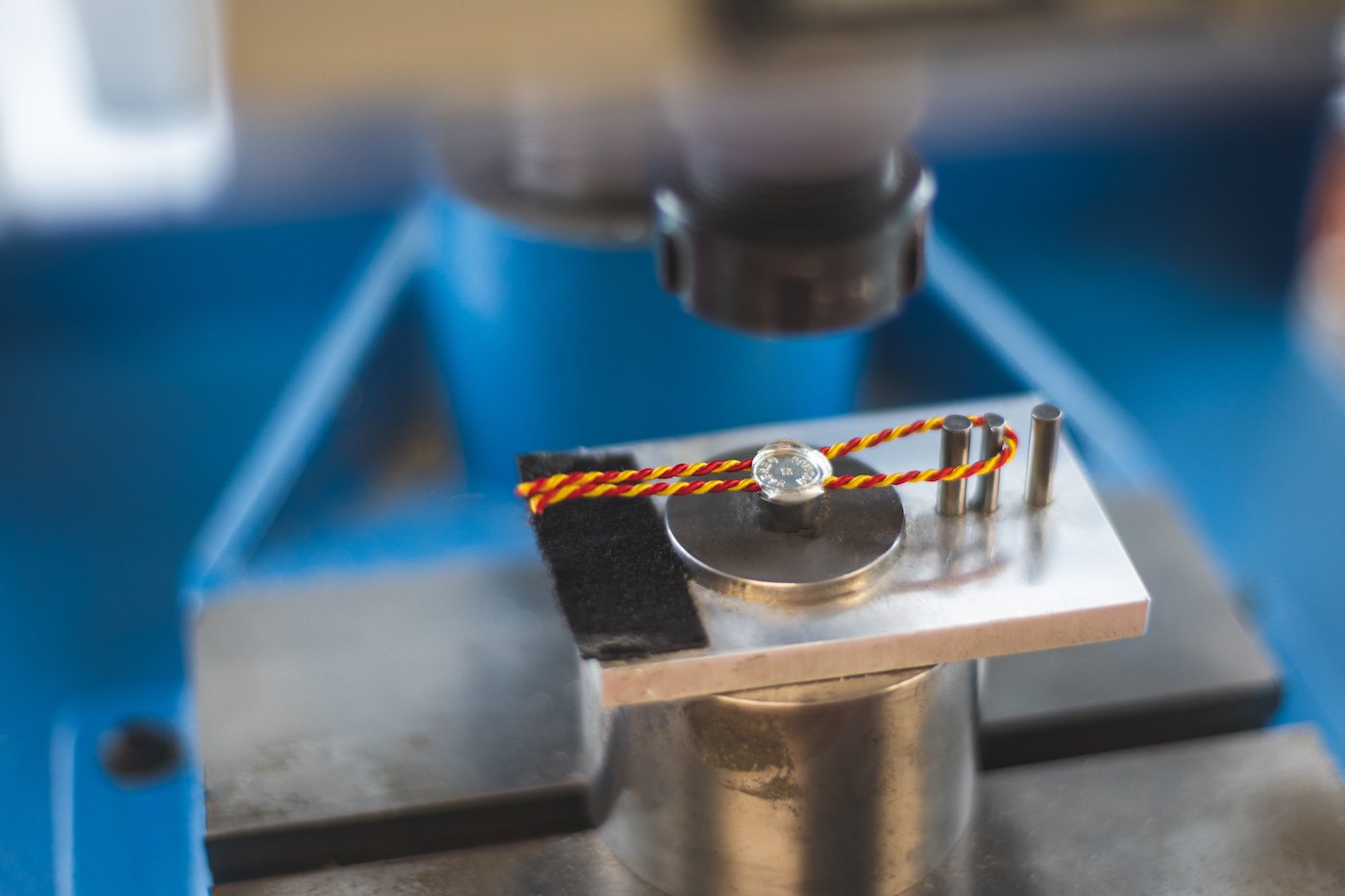oon after it was founded in 1772, Geneva Astronomical Observatory began assisting local watchmakers in their efforts to accurately measure time, hence we can see the connection that runs from the first observatory to today’s Timelab,” director Alexandre Chiuvé notes.
Last year, he took charge of this private foundation which is tasked by the Canton of Geneva to administer the Poinçon de Genève, and which tests and certifies chronometers through the Geneva Chronometry Observatory. Certificates issued by Timelab can be authenticated online using the certificate number or a QR code.
-

- Example of a certificate issued by Geneva Chronometry Observatory
Alexandre Chiuvé came well prepared for his role as director of Timelab, having worked in the technical departments of two of the most venerable names in watchmaking in Geneva, Vacheron Constantin and Rolex. Whereas watch enthusiasts are familiar with the Poinçon de Genève, one of the most stringent certifications, awarded to makers such as Cartier, Chopard, Louis Vuitton, Roger Dubuis, Vacheron Constantin and Ateliers de Monaco, the Geneva Chronometry Observatory certificate is still making its mark.
It certifies the new line of Tambour watches released earlier this year by Louis Vuitton (read our article). Longines is another brand that is known to use it, “though mainly in-house”.

Not to be confused with the COSC
Much as Jeep has become the generic term for an SUV, the COSC, which tests some two million watches a year, is the dominant force in chronometry certification, to the point that the two have merged in the public’s mind.
An alternative to the COSC, Timelab processes some 5,000 watches a year and also takes the ISO 3159 standard as its baseline.
-

- The seven criteria of ISO 3159 standard required for chronometer certification
Timelab is heir to a long tradition of testing watches for precision and has ties to the COSC, as Alexandre Chiuvé explains: “Historically, the first chronometry trials were privately organised. Seven Swiss watchmaking schools later introduced their own timing trials, each with its own criteria. These developed over a period of decades and were intended for brands that wanted to prove the accuracy of their watches. The Contrôle Officiel Suisse des Chronomètres or COSC was set up in the 1970s to provide a single, uniform standard. For decades, the Canton of Geneva provided the COSC with its official bureau. Because its services were used by private companies, the State of Geneva decided this function should be held by a private foundation. This led to the creation in 2008 of Timelab, which took over responsibilities as the COSC’s official bureau. Today, the foundation carries on the tradition of the Geneva observatory and issues its own chronometer certificates.”

Beyond ISO 3159
The ISO 3159 international standard for timekeeping instruments, the framework for certification by the COSC (a non-profit organisation) and by Timelab, was defined in 1976 and revised in 2009 – a slow process given the speed at which the watch industry incorporates new technologies and materials.
Watches submitted for chronometer certification are tested for seven criteria based on ISO 3159. These are average daily rate, average variation in rate, greatest variation in rate, difference in rate between horizontal and vertical positions, greatest deviation in rate, variation in rate due to temperature change and rate resumption. Timelab tests either the finished watch or the uncased movement (brands decide which they prefer to submit) over 16 days.
Each criteria corresponds to a minimum standard of precision. Probably the best-known is average daily rate, which must not exceed -4/+6 seconds.
In addition to the ISO-based certificate, Timelab awards the OC+ (Observatoire Chronométrique+) certificate whose requirements are more comprehensive, encompassing ISO 3159 criteria as well as water-resistance, magnetic resistance and power reserve.
When measuring chronometric precision, in addition to static testing, OC+ performs “dynamic” testing, whereby the candidate watch (only finished watches are tested, not uncased movements) is rotated over 24 hours to simulate conditions of wear.
“Precision is important and so is reliability,” says Alexandre Chiuvé. “This certificate takes both into account.” As advances in magnetic resistance continue (silicon escapements are admissible for certification by Timelab), the foundation is in the process of introducing more stringent requirements for this criterion.
The Geneva Seal
Timelab also awards the coveted Poinçon de Genève (Geneva Seal) distinction, given only to watchmakers and manufactures that are established in the city or canton of Geneva. “Geneva is the cradle of fine watchmaking and the Poinçon de Genève reflects this,” notes Alexandre Chiuvé, not without pride.
Encouraged by local watch manufacturers, in 1886 the Grand Council of the Republic and Canton of Geneva established the Poinçon de Genève to protect the reputation of Geneva watchmaking against spurious claims, and to maintain employment within the canton. Specifically, the “Law for the voluntary testing of watches” established a bureau that stamped the official State seal on a clearly visible part of the movement (the plate and a bridge) of watches presented to it by makers who were resident in Geneva – more than a century later, a role taken on by Timelab.
Vacheron Constantin and Patek Philippe were first to benefit from this prestigious label. Be warned: anyone found to have copied, counterfeited or falsified the Poinçon de Genève mark or certificate would be liable to punishment under the provisions of the Swiss Criminal Code.
Whereas chronometer certificates focus on proper functioning and precision, the rules governing the Poinçon de Genève emphasise the “qualities of craftsmanship” that distinguish Geneva’s watch production.
Accordingly, movement components (plates, bridges, regulating mechanisms, gears, jewels and shaped parts) as well as finishing are inspected to “ensure impeccable aesthetics and perfect assembly”. For example, many movement parts must be finished with polished chamfers and straight-grained sides. Wire springs are not admissible. This reflects the conviction that a watch that bears the Poinçon de Genève is “not only an instrument for measuring time, it is a work of art”.
An inventory of every Poinçon de Genève watch
Functions, water-resistance, accuracy and power reserve are rigorously tested through a series of controls which are carried out on the finished watch. For example, rate must not vary by more than one minute after seven days. A committee of experts, whose current members include Genevan watchmaker Florian Preziuso, defines the criteria for the Poinçon de Genève and revises rules to reflect innovations in technology.
“Two aspects of the rules are actually being revised right now,” Alexandre Chiuvé adds. “They are to better define requirements and to potentially introduce new criteria such as environmental responsibility, repairability and access to components. The question of territory is a sensitive issue that could also be reviewed in the longer term. Certain operations could be carried out outside the Canton of Geneva, in line with changing practices.”
Through its Héritiers de l’Excellence initiative, Timelab is establishing an inventory of all the watches to have received the Poinçon de Genève mark since 1886. The owners of such a watch – often handed down through generations, hence “heirs to excellence” – are invited to share its story. Already, more than a million have done so.
Timelab, whose seven-member board of governors is appointed by the Council of State of Geneva, also provides a testing service for brands, for example shock-resistance or strap lifecycle. These tests are carried out in its laboratory. The foundation, which employs 15 people, works with research institutes, schools and universities to develop watchmaking, microtechnology and vocational training. One recent collaboration, with HEPIA, examined the use of artificial intelligence and machine learning to precisely determine the position of the watch’s hands. Through its various missions, Timelab hence continues to serve the modern-day watch industry.





























































